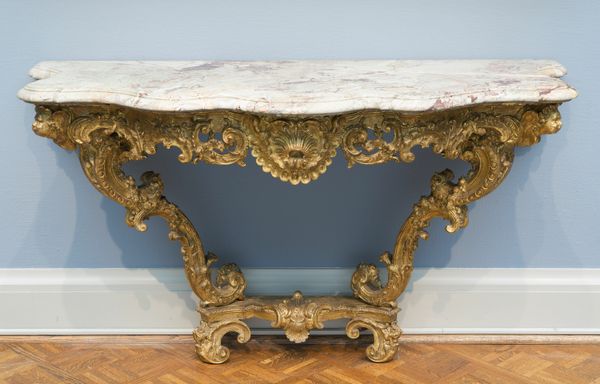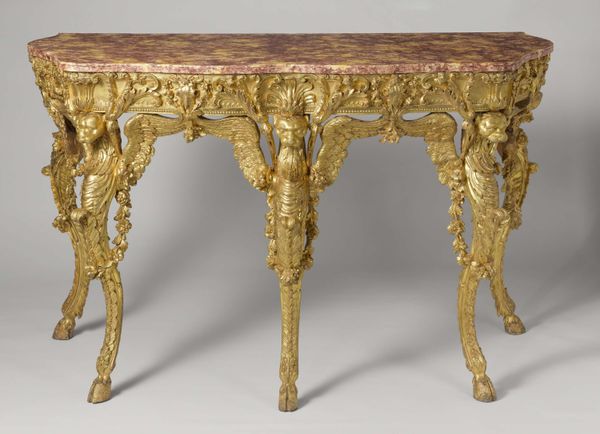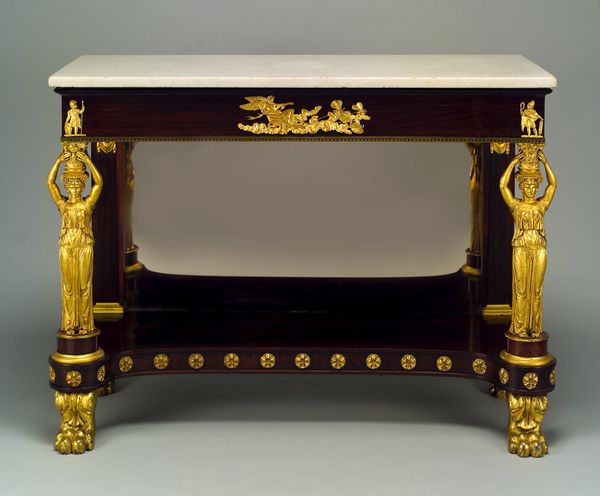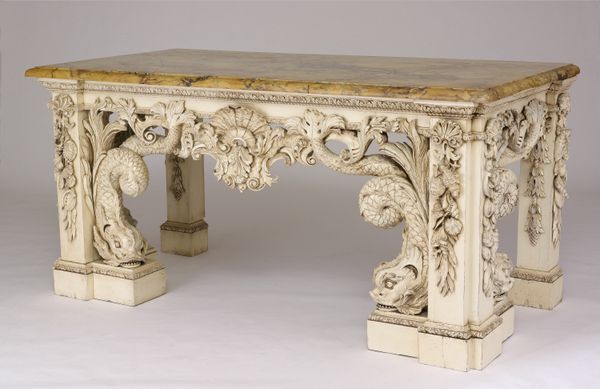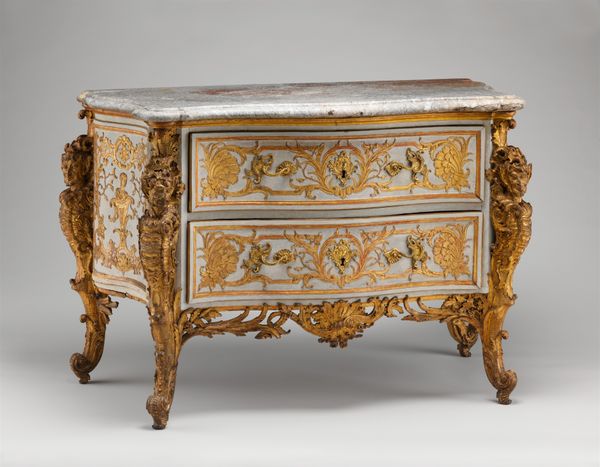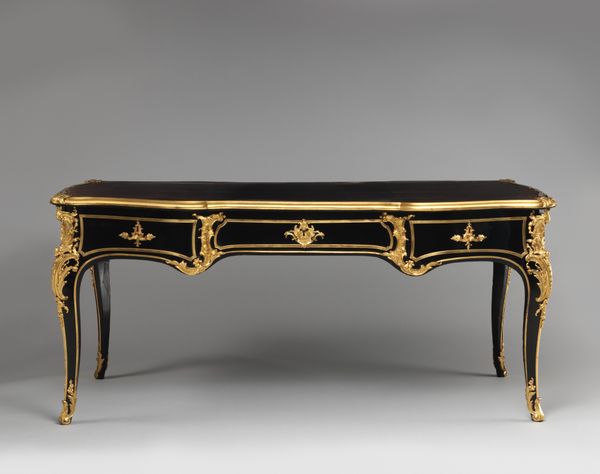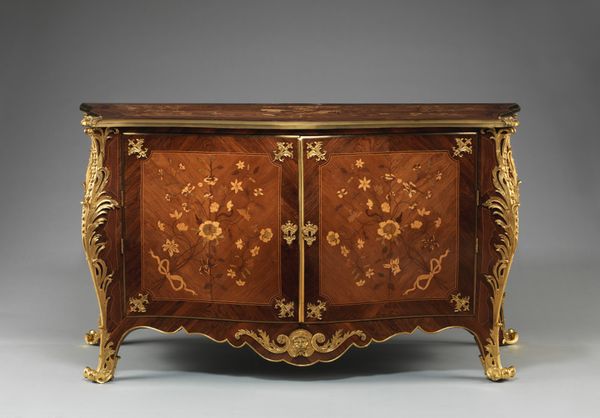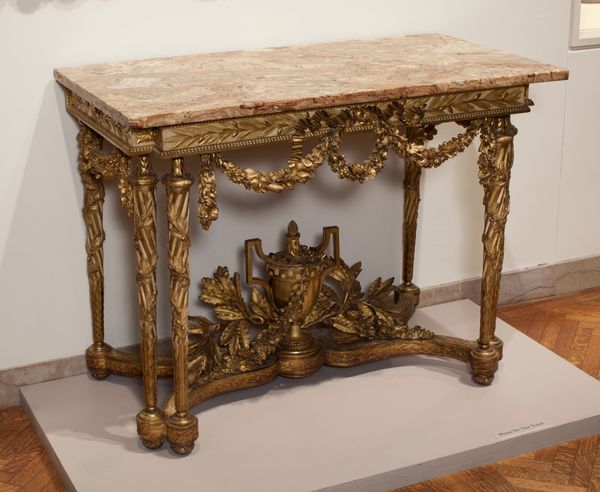
carving, sculpture, wood
#
wood texture
#
carving
#
baroque
#
sculpture
#
wooden texture
#
wood
#
decorative-art
Dimensions: height 87.0 cm, width 176.0 cm, depth 76.0 cm, width 159.0 cm, depth 63.0 cm
Copyright: Rijks Museum: Open Domain
This side table, crafted from gilded beechwood, presents an opulent vision of power and wealth. It’s easy to get lost in the intricate details, such as the figures that resemble Caryatids and the elaborate embellishments. These highly stylized forms embody the tastes of their time. It’s interesting to consider how such displays of luxury served to reinforce class distinctions, particularly in the homes of the elite. It wasn’t enough to own something beautiful, but something that also displayed access and privilege. Consider, too, the gendered aspect of this design. The inclusion of figures that appear to be Caryatids, which are feminized architectural supports, places women in a position of support or even servitude. They must literally carry the weight of the marble table top, reflecting gender roles of the time. What does it mean to literally turn women into structural features?
Comments
No comments
Be the first to comment and join the conversation on the ultimate creative platform.


